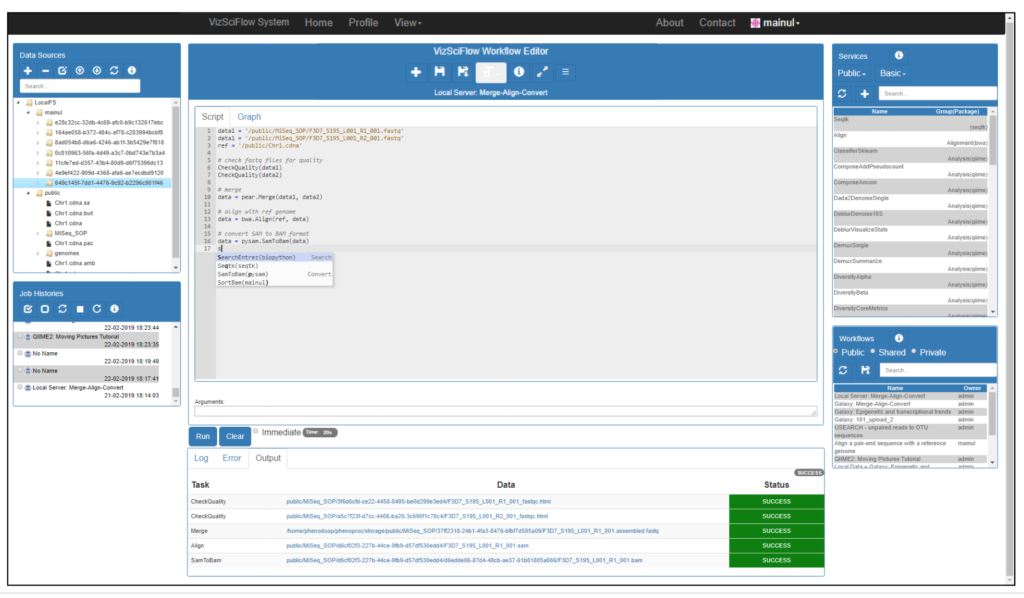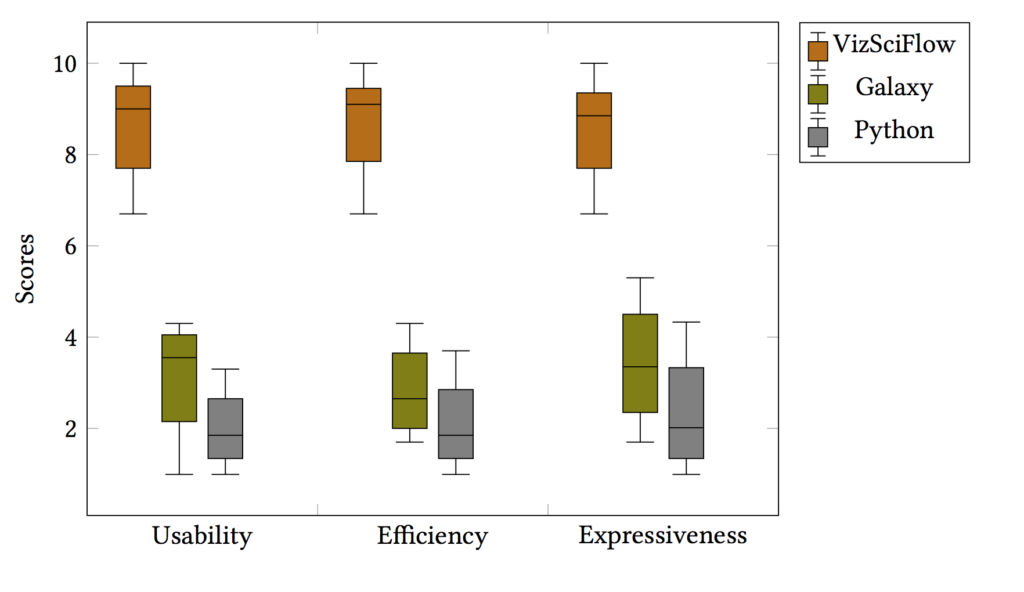Visually guided scientific workflow management framework (VizSciFlow) . The tool can be used using the following link: sr-p2irc-big3.usask.ca.
Scientific workflow management systems such as Galaxy, Taverna and Workspace, have been developed to automate scientific workflow management and are increasingly being used to accelerate the specification, execution, visualization, and monitoring of data-intensive tasks. For example, the popular bioinformatics platform Galaxy is installed on over 168 servers around the world and the social networking space myExperiment
shares almost 4,000 Galaxy scientific workflows among its 10,665 members. Most of these systems offer graphical interfaces for composing workflows. However, while graphical languages are considered easier to use, graphical workflow models are more difficult to comprehend and maintain as they become larger and more complex. Text-based languages are considered harder to use but have the potential to provide a
clean and concise expression of workflow even for large and complex workflows. A recent study showed that some scientists prefer script/text-based environments to perform complex scientific analysis with workflows. Unfortunately, such environments are unable to meet the needs of scientists who prefer graphical workflows
We identified the requirements of a usable, efficient, expressive, and flexible workflow
modeling system and proposed a graphical framework for workflow systems that provides domain specific interactive visual elements to ease modeling workflow with a domain-specific language. As a proof of concept, we developed a general SWfMS system, VizSciFlow, and customized it for the bioinformatics domain as a product to solve real-world scientific problems. We named the product as Bio-DSL using which demonstrate that code generation by mouse and keyboard interactions with graphical elements representing data sources, services, workflows, reports and other resources along with autocomplete, context sensitive help, syntax highlighting and incremental search improved the usability, effciency and expressiveness of the workflow modeling system substantially. Our flexible framework provides an evolutionary approach to enrich the DSL vocabulary by extending the capabilities of the workflow system dynamically. The data-flow graph of the workflow helps to identify the routing of data during service execution. We propose that a visually guided DSL scripting framework is a viable alternative to existing workflow systems and improves usability, expressiveness, efficiency and flexibility.

We conducted three user studies to assess its usability, expressiveness, efficiency, and flexibility. Results are promising, and in particular, our user studies show that VizSciFlow is more desirable for users to use than either Python or Galaxy for solving complex scientific problems.

Installation
In progress..
Paper(s) Published from this project
- Hossain MM, Roy B, Roy C, Schneider K. (2020). VizSciFlow: A Visually Guided Scripting Framework for Supporting Complex Scientific Data Analysis. Journal Proceedings of the ACM on Human-Computer Interaction (EICS 2020) (The first cycle of the reviews mostly asked to improve the presentation and align more to EICS topics). : 34 pages. Accepted (Journal)
